#phyciodes
Text

Phyciodes tharos / Pearl Crescent at the Sarah P. Duke Gardens at Duke University in Durham, NC
#Phyciodes tharos#Pearl Crescent#Butterfly#Butterflies#Lepidoptera#Native insects#Native pollinators#Sarah P. Duke Gardens#Duke Gardens#Nature photography#Durham NC#Durham#North Carolina#Phyciodes
2 notes
·
View notes
Text
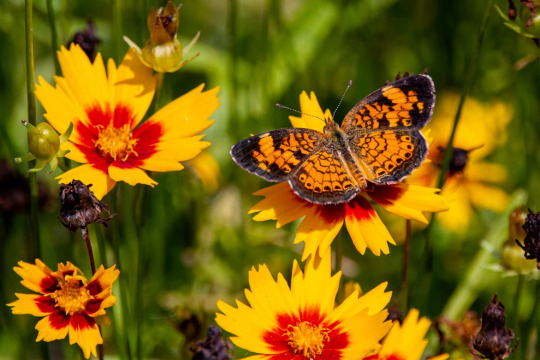
Pearl crescent butterfly on a coreopsis flower - Backyard, Cordova, Tennessee, USA
Joshua J. Cotten
Scientific name: Phyciodes tharos
Family: Nymphalidae
Host: Asters
Genus: Phyciodes
Kingdom: Animalia
The pearl crescent is a butterfly of North America. It is found in all parts of the United States except the west coast, and throughout Mexico and parts of southern Canada, in particular Ontario. Its habitat is open areas such as pastures, road edges, vacant lots, fields, open pine woods.
#Backyard#Cordova#Tennessee#USA#US#Wildlife#Butterfly#TNWildlife#United States#United States of America#North America#Coreopsis#Pearl Crescent#Phyciodes tharos#Nymphalidae#Asters#Phyciodes#Animalia
0 notes
Text
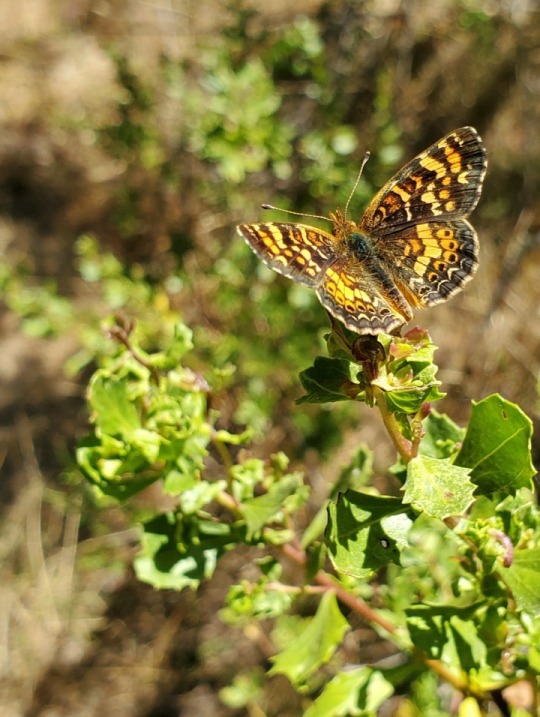
Field crescent butterfly (Phyciodes pulchella) in Northern California
#butterfly#Phyciodes pulchella#field crescent#lepidoptera#nature#bugs#nature photography#biodiversity#animals#inaturalist#arthropods#entomology#insect appreciation#insects#cute#bugblr#outdoors#hiking#california#wildlife#support native pollinators#pollinators
35 notes
·
View notes
Text

Scientific Name: Phyciodes phaon
Common Name(s): Phaon crescent
Family: Nymphalidae (brush-footed butterfly)
Life Stage(s): Adult
Location: Plano, Texas
Season(s): Summer
Not to be confused with pearl crescent.
The easiest way to tell the difference is the cream-colored band in the middle part of the forewing, which is found on phaon crescents but not pearl crescents. In general, phaons are also a bit smaller, with wingspans between 1″ and 1½″ (25–38 mm), while pearls range from 1¼″ to 1¾″ (32–45 mm).
The Alabama Butterfly Atlas notes that frogfruits are host and nectar plants for phaon crescents, and pearl crescents prefer asters. I would imagine that these butterflies visit more plants than just their preferred species, but it happens that (though it’s probably hard to tell here) this one is indeed perched on a frogfruit flower head. Similarly, the pearl crescent from my earlier post was resting on an aster plant.
#Phyciodes phaon#phaon crescent#Nymphalidae#Plano#Texas#summer#orange#butterfly#Lepidoptera#insect#bugblr
17 notes
·
View notes
Photo

Cirsium edule or edible thistle is a perennial flower which can grow up to 5ft in height. They form spiny basal rosettes much like some invasive dandelions thistles, but rest assured this native thistle should not be treated as a weed. Just be careful to ID your thistles, since the invasive ones are more prevalent.
They can tolerate just about any conditions, from full dry sites to completely wet ones. Just about the only thing they can’t tolerate is complete shade.
It’s known to be a host plant for several butterflies and moths, including the mylitta crescent or Phyciodes mylitta.
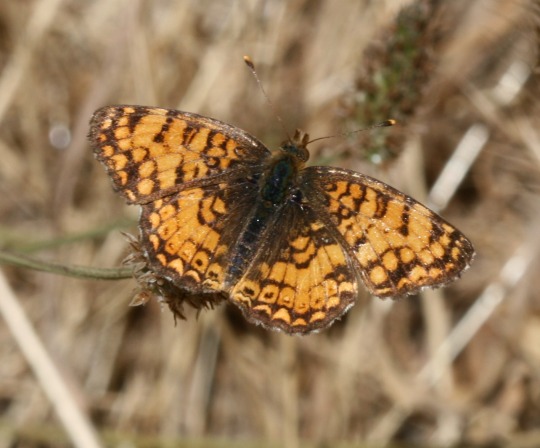
(Photo credit: By Silversyrpher (very busy at the moment) from Scotland, UK - Phyciodes mylitta (Mylitta Crescent)Uploaded by Magnus Manske, CC BY 2.0, https://commons.wikimedia.org/w/index.php?curid=21266171)
5 notes
·
View notes
Text

Likely a Pearl Crescent butterfly (Phyciodes tharos). There were several butterflies around, but none were cooperating...
#nature#my photography#butterfly#pearl crescent butterfly#nature photography#wildlife photography#insect#backyard nature#mock strawberry
9 notes
·
View notes
Text
World like this needs more butterfly/moth photos in it. Here’s a few of mine.
Salt marsh moth, Estigmene acrea
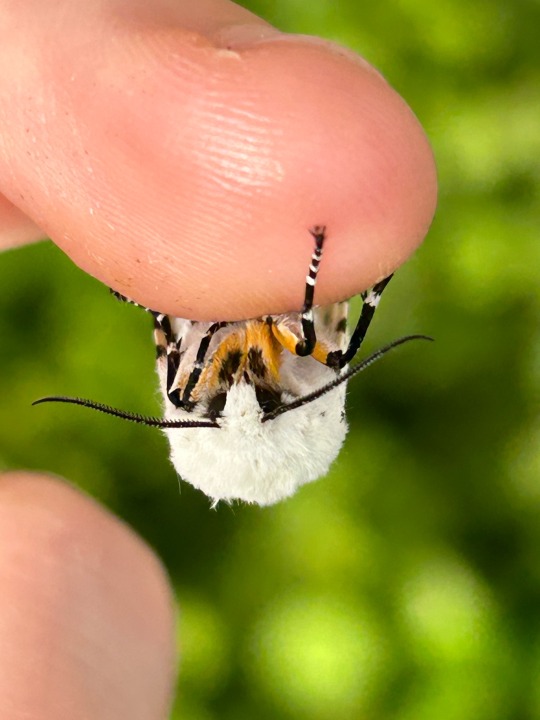


Sachem Skipper, Atalopedes campestris
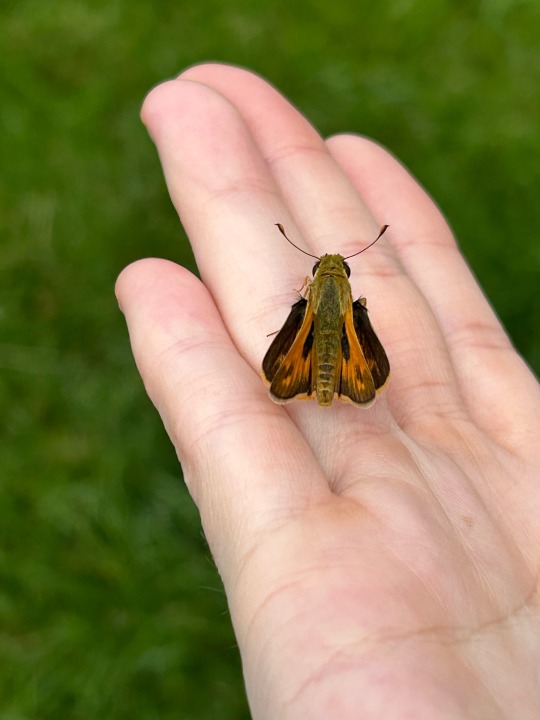

Pearl Crescent, Phyciodes tharos
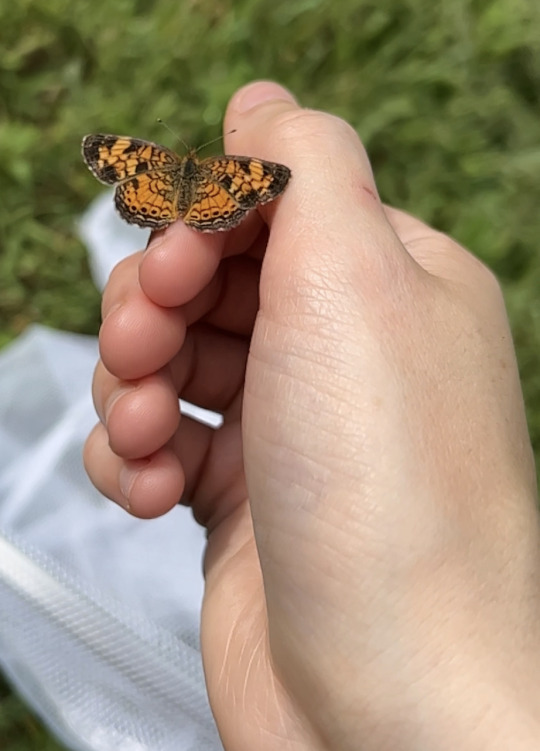
Eastern Tailed-Blue female, Cupido comyntas


Bent-Line Dart, Choephora fungorum
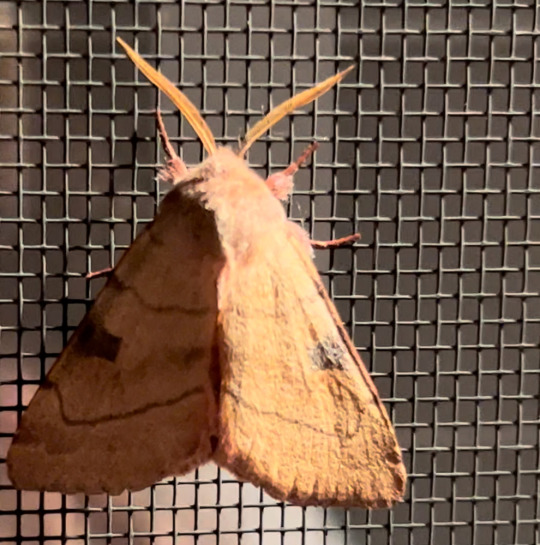

#butterfly#moths#butterflies and moths#bug photography#bugs#insects#salt marsh moth#sachem skipper#pearl crescent#eastern tailed blue#bent line dart#mah pics
6 notes
·
View notes
Text
It's the small things.

This is a Phaon crescent butterfly. You can see just how small by comparing to the clover. I saw the butterfly yesterday in my backyard.
"Phaon Crescent Phyciodes phaon - Wingspan: 1 - 1½ inches (2.5 - 3.8 cm). The forewing is dark orange and black with a pale cream band. The underside of the hindwing is cream to yellowish; spring and fall butterflies have a gray hindwing." - alabama.butterflyatlas.usf.edu
10 notes
·
View notes
Text
Lighted
Phyciodes cocyta (Northern crescent)
©2023 Ken Oliver
#macro #animal #nature #butterfly #northern crescent #insect #flowers

#nature#photographers on tumblr#photography#original photographers#original photographers on tumblr#nature photography#original photography on tumblr#wildlife#insect#butterfly#flower
3 notes
·
View notes
Text

Pearl Crescent (Phyciodes tharos)
2 notes
·
View notes
Text
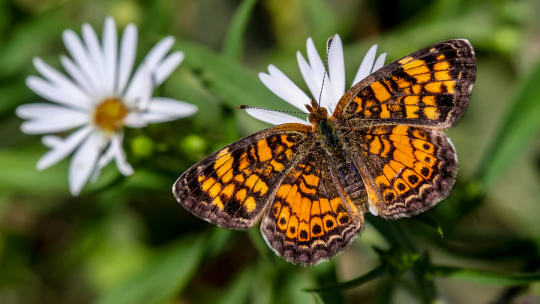
Phyciodes Tharos by Nicholas Crowley
0 notes
Text
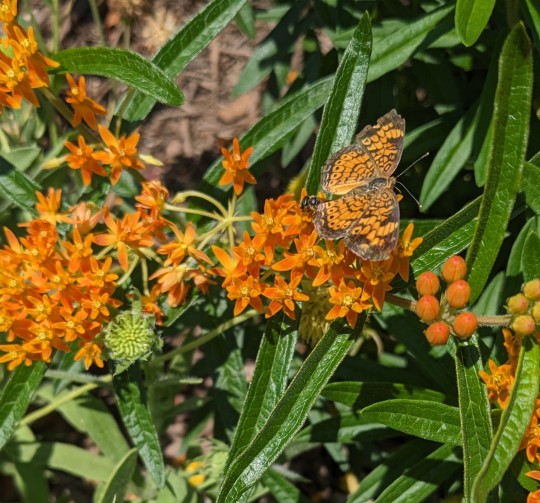
Phyciodes tharos on Asclepias tuberosa / Pearl Crescent on Butterfly Weed
#Phyciodes tharos#pearl crescent#asclepias tuberosa#Butterfly Weed#butterflies#Butterfly#Milkweed#Native plants#Native flowers#Native pollinators#Lepidoptera#Nature photography#Flowers#Home
2 notes
·
View notes
Text
Phaon Crescent Butterflies Absolutely Love the Spring Sun
Phaon Crescent Butterflies Absolutely Love the Spring Sun shows one of these gorgeous spring butterflies warming itself in the afternoon sun.
Sun Worshipper
One of our most colorful spring butterflies is the Phaon crescent (Phyciodes phaon). It’s a brushfooted butterfly like the American lady and the gulf fritillary, and it’s usually one of the first ones to appear, so it’s frequently on the wing while the weather is still a little cool, especially at night. Insects depend on the temperature outside (or inside, when they manage to get…
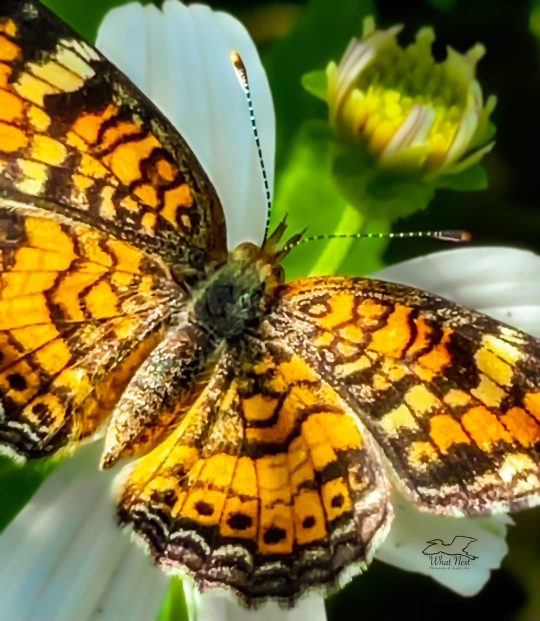
View On WordPress
#beautiful butterflies#beautiful insects#brushfooted butterflies#butterflies#butterflies in the sun#butterfly#butterfly photographs#butterfly photography#colorful butterflies#colorful insects#Florida brushfooted butterflies#Florida butterflies#Florida insects#insect photographs#insect photography#insects#Phaon crescent#Phaon crescent butterfly#photography#southern butterflies#spring butterflies
1 note
·
View note
Text
@porgs-are-space-puffins submitted: I found this butterfly in Utah i was wondering what kind of butterfly it is

Sure, looks like either a field crescent or a painted crescent. They're both in the same genus (Phyciodes) and have rather variable markings that can look super similar so I'd need more photos to say for sure!
49 notes
·
View notes
Photo

Scientific Name: Phyciodes tharos
Common Name(s): Pearl crescent
Family: Nymphalidae (brush-footed butterfly)
Life Stage(s): Adult
Location: Plano, Texas
Season(s): Fall
Based on location. Often confused with northern crescent (P. cocyta).
#Phyciodes tharos#pearl crescent#Nymphalidae#Plano#Texas#fall#autumn#orange#butterfly#Lepidoptera#insect#bugblr
7 notes
·
View notes
Photo
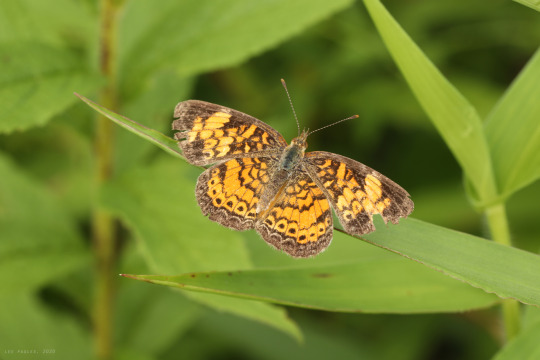
A northern crescent (Phyciodes cocyta) gets its bearings among the converging green blades at a marsh’s edge.
#appalachia#vandalia#west virginia#lepidoptera#phyciodes#northern crescent#butterfly#fairfax pond-rehe wildlife management area#wetlands#marsh
18 notes
·
View notes